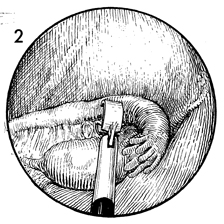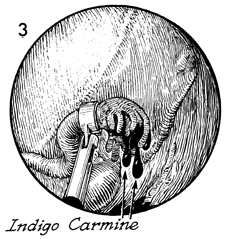|
||||||
Diagnostic
Uses Demonstration Laparoscopic
Resection Ovarian
Biopsy Electrocoagulation
of Lysis
or Adhesions Control
of Hemorrhage Sterilization
by Silastic
Band Sterilization Hulka
Clip Sterilization Sterilization
by the Sterilization
by the Sterilization
by the Sterilization - Ucheda Technique Tuboplasty
- |
Demonstration of Tubal Patency Modern infertility evaluations are rarely complete without observation of the Fallopian tube and ovary for disease. Laparoscopy has replaced culdoscopy as the procedure of choice because it allows the pelvic surgeon a broader plane of observation, better manipulation of internal structures, and the ability to electrocoagulate endometrial implants. The purpose of the operation is to inject a dye through the uterus and the Fallopian tube to demonstrate patency of the tube. Physiologic Changes. None. Points of Caution. Care must be taken to ensure that there is a watertight seal between the acorn on the cervical cannula and the surface of the cervix to prevent the dye from leaking back into the vagina. Technique
|
|||||
Copyright - all rights reserved / Clifford R. Wheeless,
Jr., M.D. and Marcella L. Roenneburg, M.D.
All contents of this web site are copywrite protected.



